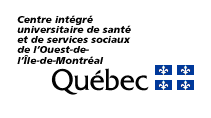2008-05-20
On October 14, 2007, the Douglas opened its first Brief Intervention Unit. Located in Emergency at Reed Pavilion, this eight-bed facility offers a new treatment option for
patients.
Who Does It Serve?
Some people who arrive at Emergency may benefit from
staying a few days, so their condition may be stabilized. Although they are not well enough to be treated and discharged immediately, they will probably not require longterm
treatment in an admitting unit. These patients are ideal candidates for treatment in the BIU.
96 Hours
How does the process work?
When a patient comes to Emergency, he is evaluated by Emergency staff to determine if he can be treated and discharged, or if admitting unit treatment is required. If the Emergency staff assesses that brief intervention is the best option, the patient is admitted to the BIU.
Once the patient has been admitted to the BIU, the staff has up to 96 hours to stabilize his condition. When stabilization has been achieved, the staff arranges for outpatient services, as required, and then discharges the individual.
If a BIU patient’s condition cannot be stabilized, he will be sent to an admitting unit.
According to BIU Clinical-Administrative Chief Danièlle Choinière, this new unit offers definite advantages for patients, “The BIU helps patients get back on their feet emotionally and physically, and with as little disruption to their lives as possible. This is an important factor in their recovery.”
A Third Option
Danièlle also explains the advantages for staff, “In the past, Emergency staff had only two options: either discharge patients or send them to an admitting unit. This was frustrating when they felt they could likely stabilize certain patients if they had the opportunity to treat them for a few days. Thanks to the BIU, staff now have this third option.”
Of course, the BIU doesn’t work in a vacuum, “To work effectively, the BIU must have a positive working relationship with all of its partners. I’m pleased to say we’ve had quick responses and excellent results with all our partners, including the Module d'Intervention Rapide (MIR), Module d'Évaluation Liaison (MEL), the Assertive Community Treatment team (ACT), l’Autre Maison Centre de Crise, general practitioners, and CLSCs.”
Danièlle is impressed with the BIU’s progress to date, “We have an excellent team that is skilled at adapting their skills to meet the needs of the patients.
” Her assessment is supported by Carlos Dias, MIR clinical-administrative chief, “The BIU is doing a great job of stabilizing patients by giving them intensive, short-term support. Their work paves the way for our MIR team and our partners to provide excellent follow-up care for these patients. Thanks to the new BIU option, we’re able to maximize our effectiveness in helping patients avoid hospitalization, and return to their own homes as quickly as possible.”
What Is MIR?
Created in September 2007, the Rapid Intervention Module (MIR) provides assessment and treatment for patients who require quick and intensive intervention.
These patients are referred primarily from the Douglas Emergency, the Brief Intervention Unit (BIU), or the Evaluation-Liaison Module (MEL). MIR staff meet with patients for approximately two to six, one-hour, individual sessions, and provide therapeutic support and/or psychiatric follow-up to stabilize their condition.
Once this treatment period has concluded, the MIR staff also arrange for followup care and provide recommendations to the family doctor, as required. Patients needing more intensive care are referred to other hospital services, CLSCs, community- based resources, or psychiatric services from other sectors. “MIR fills an important gap,” explains Carlos Dias, clinical administrative chief. “We provide much-needed intensive support, which increases our patients’ ability to recover successfully.”


